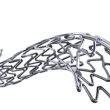Reduced dosage of tenecteplase in elderly patients undergoing a pharmaco-invasive strategy. Delays in achieving timely reperfusion in patients with acute coronary syndrome with ST elevation (STEACS), whether through fibrinolysis or primary percutaneous coronary intervention (PCI), are associated with increased mortality. European guidelines establish a target reperfusion time of 120 minutes after the first medical contact...
Simplified Rapid Intravenous Hydration for the Prevention of Contrast-Induced Nephropathy in Patients with Chronic Kidney Disease
Patients with chronic kidney disease (CKD) undergoing coronary angiography are at increased risk of developing contrast-associated acute kidney injury (CA-AKI), which is associated with increased mortality. According to current guidelines, the standard treatment for preventing CA-AKI in patients with moderate to severe CKD is long-duration peri-procedural intravenous hydration with saline solution. This standard hydration is...
MIL Train More MIL: Day 3
▶ We continue to share the experience “MIL Training More MIL – SOLACI”, our training program on structural heart disease for Latin American Women Interventionists. 👉 The third day of activities was carried out at the Italian Hospital in Buenos Aires. ✅ We had an inspiring scientific agenda: 👉 20 years of TAVR, where our...
Frequency and Causes of Mortality in Chronic Total Occlusion
In recent years, there has been an increase in the number of percutaneous coronary interventions (PCI) performed to treat chronic total occlusion (CTO). This increase is due to the availability of more advanced technology and greater experience of both operators and specialized centers. However, it is important to note that this technique is not free...
Association Between Radial Wall Strain (RWS) and Risk of Acute Myocardial Infarction
Despite major advances in secondary prevention and reperfusion strategies, acute myocardial infarction (AMI) still causes morbidity and mortality. A significant portion of acute events arise from mild to moderate lesions identified months to years before the index event. Early detection of lesions at higher risk of progression and rupture may allow for more targeted treatment...
Diffuse Coronary Artery Disease: One-Year 48mm XIENCE Skypoint Outcomes
Long 48mm Stent XIENCE Skypoint in the treatment of diffuse CAD Long coronary artery lesions often involve complex decision making since they can be treated either with a long stent or with shorter overlapping stents. Both in registries and meta-analysis, the overlapping technique has been associated to increased target vessel revascularization and increased radioscopy time,...
EuroPCR 2023 | New Renal Denervation Devices Show Promising Results
The Netrod System study included 205 patients with uncontrolled essential hypertension while taking two drugs (nifedipine and hydrochlorothiazide), who were randomized 2:1 to denervation or sham control. All subjects had undergone renal angiography before randomization. Renal denervation was done using the Setrod System device. Mean patient age was 50 years old, and 16% of subjects were female....
EuroPCR 2023 | More Evidence in Favor of Renal Denervation
This study included 219 patients with uncontrolled essential hypertension who had received at least two antihypertensive drugs. All of them underwent a renal angiography and were randomized to the renal denervation group or the control group. Denervation was performed using the SyMapCath I catheter and the SYMPIONEER S1 generator/stimulator. Mean patient age was 45 years old, and...
Post PCI Angina: Inevitable or Avoidable?
Predictors of post PCI angina Among the complications of ischemic cardiomyopathy stenting, those called chronic, with significant functional and mental compromise, might affect patient quality of life. This can be observed in different scenarios, such as instent restenosis and post PCI angina. This kind of complications is associated with anxiety and depression at long term. ...
Low Gradient Aortic Stenosis: Is Invasive Assessment Viable?
There is an important group of patients presenting low flow, low-gradient severe aortic stenosis (defined as mean gradient <40 mmHg). This is why we do dobutamine stress echocardiogram (DSE), to confirm whether we are dealing with truly severe aortic stenosis. However, it might not be well tolerated and a CT angiography will be done to...









